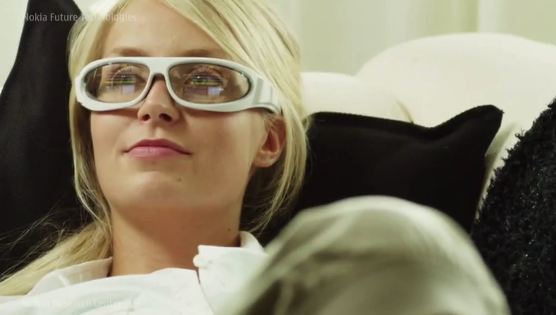Increased reality
The principle of augmented reality is based on the use of computers to superimpose artificial objects on a real worldview, be it direct or reproducible media.
It has become familiar in cinema, where creatures made by model studios mix with comedians, ultimately at least as a result.
But it is from the point of view of the growth of reality in real time that the prospects look most impressive.
Cinema and video
The simplest example is to insert images, such as ads, into videos on building walls.
The Zunavision method allows you to insert photos or videos into a video.
A few examples of films, TV shows where artificial creatures appear:
- Nick Cutter and the doors of time.
Thanks to the opening of temporary doors, dinosaurs and other prehistoric creatures appear in the modern world. In - the film "The Mummy" and its sequels realistically use virtual creatures, including scarabs that penetrate bodies.
Augmented reality tends to generalize in film.
Zunavision
Source: Stanford University
Stanford University offers a new, easier way to put photos in videos by adding them to the walls of buildings, for example.
A group of researchers specializing in artificial interleaves have developed software that achieves this result simply, they called their process ZunaVision.
The algorithm for processing the original video is called 3D Surface Tracker Technology. It is able to take into account objects passing by the surface where the inlaid image is placed, and therefore hide parts of them when something passes by.
The video shows how to add Pepsi brand ads. The user will doubt the advisability of adding advertising posters where they are not, but for advertisers this is different. It's an inventive way to expand advertising space by running ads on walls in movies, even the oldest!
This process is not limited to billboards, but you can also insert a video onto a flat surface inside another video.
Contact lenses
Augmented reality thanks to contact lenses lies in the appearance of information on the surface of the lens.
It is formed from a layer of vision-correcting polymers. Added to these are control circuits, communications and a tiny antenna using a wireless power source. An image superimposed on the real world is formed by a network of LEDs that recreate words or objects.
In September 2009, prototypes were tested on animals.
Real time and points
This is the future, and it will wear glasses or contact glasses connected to a computer system capable of adding environment-related images (as in the Life 2.0 video).
This can be from the simplest, messages in graphic or textual form, to the most thoughtful, characters speaking and acting as real creatures, or varnish added to real characters and objects to change their appearance.
This idea is implemented by Second Sight, which creates an artificial retina with glasses and a camera to restore vision to the blind.
Vuzix already offers $2,000 glasses that display 3D images superimposed on the real world. They are equipped with cameras and are connected to a computer to create virtual elements.
Space Glass is ahead of Google Glass, these augmented reality glasses allow you to manipulate virtual objects, which in itself shows that in the end you can live in a completely virtual environment. A simpler application, interactive creation of objects for printing them, as shown in the video.
Using a webcam
The principle is to put the camera on the player. Its image will be reproduced on the screen and the movements will be reproduced, will interact with the character of the game. It can also draw objects in front of the camera that will enter the game.
This principle was implemented by Sony along with its eyepet.
Point and search from Nokia
Nokia combines shape recognition with augmented reality in its mobile phones.
This involves identifying an object when a camera or company logo is pointed at it on a sign, advertising and linking it to the device's GPS to find it in a place, and then showing the information, text or picture, to provide useful data in that place.
You can also point to the barcode, and use a database search to compare the price with what other stores practice.
By pointing the camera at environmental objects, you can find out about them: it goes much further than search engines bring!
Reduced reality
This name was given to a technology that removes objects in video in less than 40 ms. The operator just needs to surround the object to make it disappear. It was developed at the Ilmenau University of Technology in Germany and now allows you to live in a world free of unnecessary or unwanted objects. Google Street View already uses such an algorithm to erase people and leave only buildings.
His "Diminused Reality" apps are actually plentiful. Virtually change the interior scenery before staging, shoot films in real decor, choosing what you want to keep in the image, etc.
It is expected to appear on mobile soon to complement augmented reality.
Google makes glasses from Nokia

Google is going to make Nokia virtual glasses.
More specifically, where Nokia simply shoots futuristic video without supplying any products, Google is developing this product. There is also a video, but it is less attractive than that of Nokia (A on the right). Both companies must join forces, one to make products, the other to promote!
- Full immersion fusion. Presentation of Total Immersion D'Fusion software that allows you to integrate virtual reality into video (which is done in this very presentation video).
- Project on layout. A video game for the Zune HD that adds characters to the layout.
- Eyepet, video inlay via webcam.
- The walls become transparent. Video, transparency on augmented reality.
Further information
- Enlarged environmental laboratory.
- Laillard. The site invites you to create your own augmented reality universe. Using computer vision, you can add a virtual layer to objects.